Using Meta Labels for the Training of Weighting Models in a Sample-Specific Late Fusion Classification Architecture
Peter Bellmann,
Patrick Thiam,
Friedhelm Schwenker

Auto-TLDR; A Late Fusion Architecture for Multiple Classifier Systems
Similar papers
Categorizing the Feature Space for Two-Class Imbalance Learning
Rosa Sicilia, Ermanno Cordelli, Paolo Soda

Auto-TLDR; Efficient Ensemble of Classifiers for Minority Class Inference
Abstract Slides Poster Similar
Classifier Pool Generation Based on a Two-Level Diversity Approach
Marcos Monteiro, Alceu Britto, Jean Paul Barddal, Luiz Oliveira, Robert Sabourin

Auto-TLDR; Diversity-Based Pool Generation with Dynamic Classifier Selection and Dynamic Ensemble Selection
Abstract Slides Poster Similar
A Novel Random Forest Dissimilarity Measure for Multi-View Learning
Hongliu Cao, Simon Bernard, Robert Sabourin, Laurent Heutte

Auto-TLDR; Multi-view Learning with Random Forest Relation Measure and Instance Hardness
Abstract Slides Poster Similar
Boundary Bagging to Address Training Data Issues in Ensemble Classification

Auto-TLDR; Bagging Ensemble Learning for Multi-Class Imbalanced Classification
Decision Snippet Features
Pascal Welke, Fouad Alkhoury, Christian Bauckhage, Stefan Wrobel

Auto-TLDR; Decision Snippet Features for Interpretability
Abstract Slides Poster Similar
A Cheaper Rectified-Nearest-Feature-Line-Segment Classifier Based on Safe Points
Mauricio Orozco-Alzate, Manuele Bicego
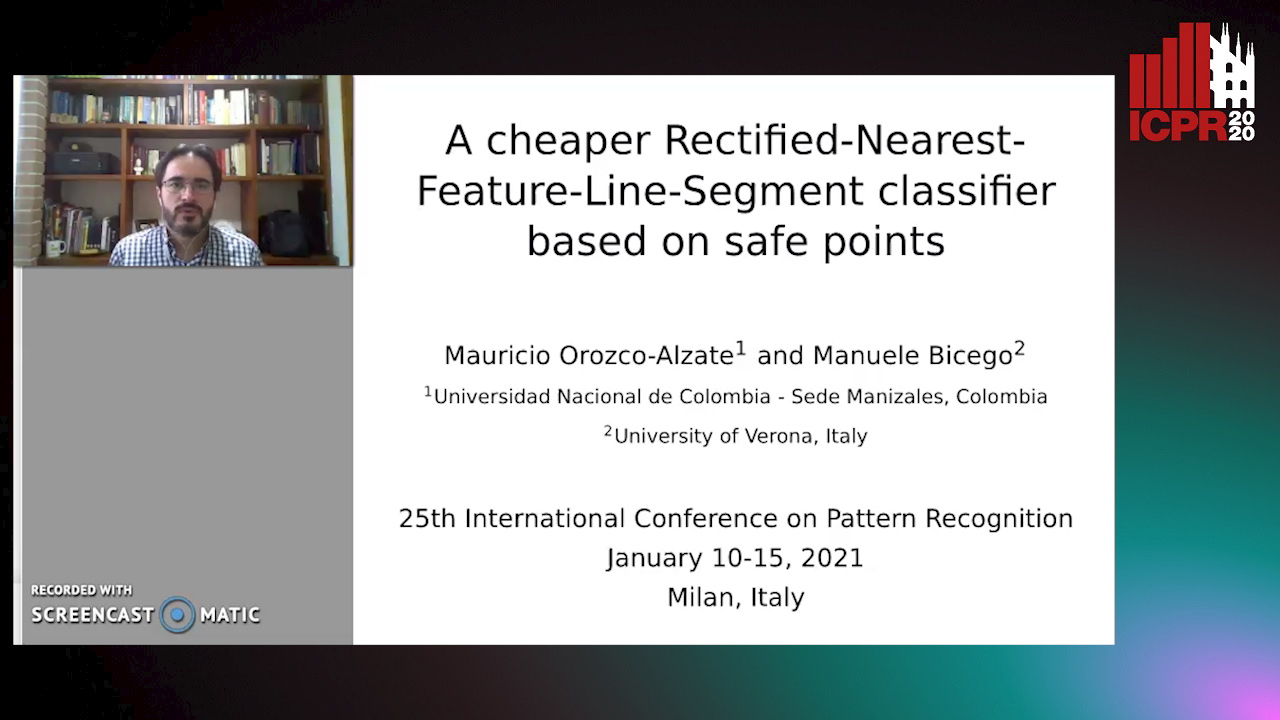
Auto-TLDR; Rectified Nearest Feature Line Segment Segment Classifier
Abstract Slides Poster Similar
Algorithm Recommendation for Data Streams
Jáder Martins Camboim De Sá, Andre Luis Debiaso Rossi, Gustavo Enrique De Almeida Prado Alves Batista, Luís Paulo Faina Garcia

Auto-TLDR; Meta-Learning for Algorithm Selection in Time-Changing Data Streams
Abstract Slides Poster Similar
MD-kNN: An Instance-Based Approach for Multi-Dimensional Classification
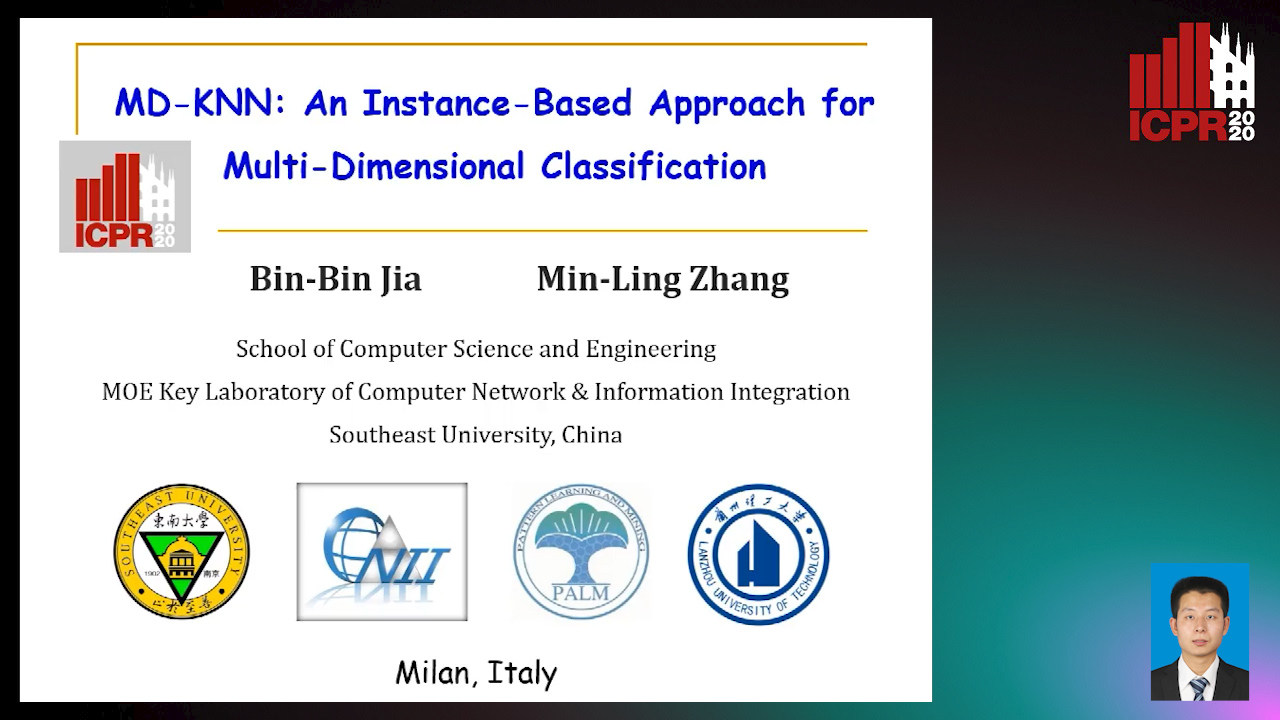
Auto-TLDR; MD-kNN: Adapting Instance-based Techniques for Multi-dimensional Classification
Abstract Slides Poster Similar
How to Define a Rejection Class Based on Model Learning?
Sarah Laroui, Xavier Descombes, Aurelia Vernay, Florent Villiers, Francois Villalba, Eric Debreuve

Auto-TLDR; An innovative learning strategy for supervised classification that is able, by design, to reject a sample as not belonging to any of the known classes
Abstract Slides Poster Similar
Explainable Online Validation of Machine Learning Models for Practical Applications
Wolfgang Fuhl, Yao Rong, Thomas Motz, Michael Scheidt, Andreas Markus Hartel, Andreas Koch, Enkelejda Kasneci

Auto-TLDR; A Reformulation of Regression and Classification for Machine Learning Algorithm Validation
Abstract Slides Poster Similar
Electroencephalography Signal Processing Based on Textural Features for Monitoring the Driver’s State by a Brain-Computer Interface
Giulia Orrù, Marco Micheletto, Fabio Terranova, Gian Luca Marcialis

Auto-TLDR; One-dimensional Local Binary Pattern Algorithm for Estimating Driver Vigilance in a Brain-Computer Interface System
Abstract Slides Poster Similar
Mean Decision Rules Method with Smart Sampling for Fast Large-Scale Binary SVM Classification
Alexandra Makarova, Mikhail Kurbakov, Valentina Sulimova

Auto-TLDR; Improving Mean Decision Rule for Large-Scale Binary SVM Problems
Abstract Slides Poster Similar
EasiECG: A Novel Inter-Patient Arrhythmia Classification Method Using ECG Waves
Chuanqi Han, Ruoran Huang, Fang Yu, Xi Huang, Li Cui

Auto-TLDR; EasiECG: Attention-based Convolution Factorization Machines for Arrhythmia Classification
Abstract Slides Poster Similar
A Novel Adaptive Minority Oversampling Technique for Improved Classification in Data Imbalanced Scenarios
Ayush Tripathi, Rupayan Chakraborty, Sunil Kumar Kopparapu

Auto-TLDR; Synthetic Minority OverSampling Technique for Imbalanced Data
Abstract Slides Poster Similar
Creating Classifier Ensembles through Meta-Heuristic Algorithms for Aerial Scene Classification
Álvaro Roberto Ferreira Jr., Gustavo Gustavo Henrique De Rosa, Joao Paulo Papa, Gustavo Carneiro, Fabio Augusto Faria

Auto-TLDR; Univariate Marginal Distribution Algorithm for Aerial Scene Classification Using Meta-Heuristic Optimization
Abstract Slides Poster Similar
Quantified Facial Temporal-Expressiveness Dynamics for Affect Analysis
Md Taufeeq Uddin, Shaun Canavan

Auto-TLDR; quantified facial Temporal-expressiveness Dynamics for quantified affect analysis
Separation of Aleatoric and Epistemic Uncertainty in Deterministic Deep Neural Networks
Denis Huseljic, Bernhard Sick, Marek Herde, Daniel Kottke

Auto-TLDR; AE-DNN: Modeling Uncertainty in Deep Neural Networks
Abstract Slides Poster Similar
The eXPose Approach to Crosslier Detection
Antonio Barata, Frank Takes, Hendrik Van Den Herik, Cor Veenman

Auto-TLDR; EXPose: Crosslier Detection Based on Supervised Category Modeling
Abstract Slides Poster Similar
Confidence Calibration for Deep Renal Biopsy Immunofluorescence Image Classification
Federico Pollastri, Juan Maroñas, Federico Bolelli, Giulia Ligabue, Roberto Paredes, Riccardo Magistroni, Costantino Grana

Auto-TLDR; A Probabilistic Convolutional Neural Network for Immunofluorescence Classification in Renal Biopsy
Abstract Slides Poster Similar
Supervised Feature Embedding for Classification by Learning Rank-Based Neighborhoods
Ghazaal Sheikhi, Hakan Altincay

Auto-TLDR; Supervised Feature Embedding with Representation Learning of Rank-based Neighborhoods
Comparison of Stacking-Based Classifier Ensembles Using Euclidean and Riemannian Geometries
Vitaliy Tayanov, Adam Krzyzak, Ching Y Suen
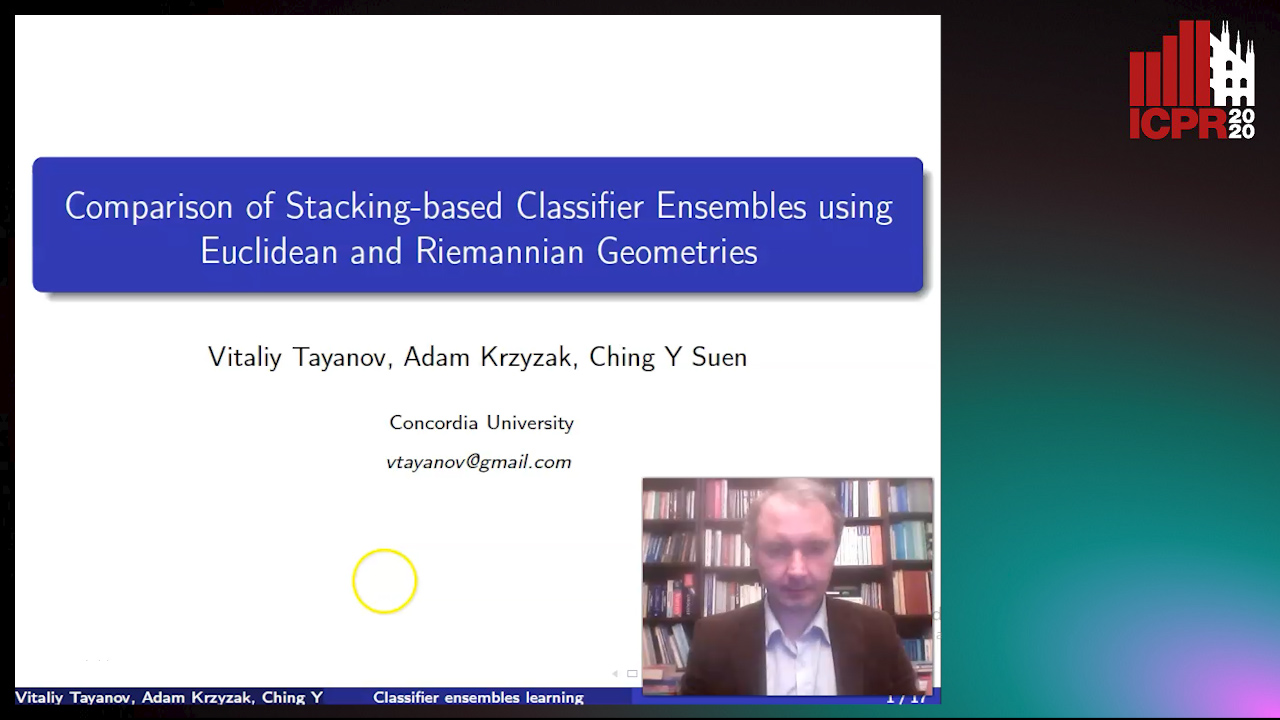
Auto-TLDR; Classifier Stacking in Riemannian Geometries using Cascades of Random Forest and Extra Trees
Abstract Slides Poster Similar
Inferring Functional Properties from Fluid Dynamics Features
Andrea Schillaci, Maurizio Quadrio, Carlotta Pipolo, Marcello Restelli, Giacomo Boracchi

Auto-TLDR; Exploiting Convective Properties of Computational Fluid Dynamics for Medical Diagnosis
Abstract Slides Poster Similar
On Learning Random Forests for Random Forest Clustering
Manuele Bicego, Francisco Escolano

Auto-TLDR; Learning Random Forests for Clustering
Abstract Slides Poster Similar
ESResNet: Environmental Sound Classification Based on Visual Domain Models
Andrey Guzhov, Federico Raue, Jörn Hees, Andreas Dengel

Auto-TLDR; Environmental Sound Classification with Short-Time Fourier Transform Spectrograms
Abstract Slides Poster Similar
Multi-annotator Probabilistic Active Learning
Marek Herde, Daniel Kottke, Denis Huseljic, Bernhard Sick

Auto-TLDR; MaPAL: Multi-annotator Probabilistic Active Learning
Abstract Slides Poster Similar
Proximity Isolation Forests
Antonella Mensi, Manuele Bicego, David Tax

Auto-TLDR; Proximity Isolation Forests for Non-vectorial Data
Abstract Slides Poster Similar
Recognizing Bengali Word Images - A Zero-Shot Learning Perspective
Sukalpa Chanda, Daniël Arjen Willem Haitink, Prashant Kumar Prasad, Jochem Baas, Umapada Pal, Lambert Schomaker

Auto-TLDR; Zero-Shot Learning for Word Recognition in Bengali Script
Abstract Slides Poster Similar
Using Machine Learning to Refer Patients with Chronic Kidney Disease to Secondary Care
Lee Au-Yeung, Xianghua Xie, Timothy Marcus Scale, James Anthony Chess

Auto-TLDR; A Machine Learning Approach for Chronic Kidney Disease Prediction using Blood Test Data
Abstract Slides Poster Similar
Feature Engineering and Stacked Echo State Networks for Musical Onset Detection
Peter Steiner, Azarakhsh Jalalvand, Simon Stone, Peter Birkholz

Auto-TLDR; Echo State Networks for Onset Detection in Music Analysis
Abstract Slides Poster Similar
Memetic Evolution of Training Sets with Adaptive Radial Basis Kernels for Support Vector Machines
Jakub Nalepa, Wojciech Dudzik, Michal Kawulok

Auto-TLDR; Memetic Algorithm for Evolving Support Vector Machines with Adaptive Kernels
Abstract Slides Poster Similar
Multi-Attribute Learning with Highly Imbalanced Data
Lady Viviana Beltran Beltran, Mickaël Coustaty, Nicholas Journet, Juan C. Caicedo, Antoine Doucet

Auto-TLDR; Data Imbalance in Multi-Attribute Deep Learning Models: Adaptation to face each one of the problems derived from imbalance
Abstract Slides Poster Similar
Hierarchical Routing Mixture of Experts
Wenbo Zhao, Yang Gao, Shahan Ali Memon, Bhiksha Raj, Rita Singh

Auto-TLDR; A Binary Tree-structured Hierarchical Routing Mixture of Experts for Regression
Abstract Slides Poster Similar
A Heuristic-Based Decision Tree for Connected Components Labeling of 3D Volumes
Maximilian Söchting, Stefano Allegretti, Federico Bolelli, Costantino Grana

Auto-TLDR; Entropy Partitioning Decision Tree for Connected Components Labeling
Abstract Slides Poster Similar
Malware Detection by Exploiting Deep Learning over Binary Programs
Panpan Qi, Zhaoqi Zhang, Wei Wang, Chang Yao
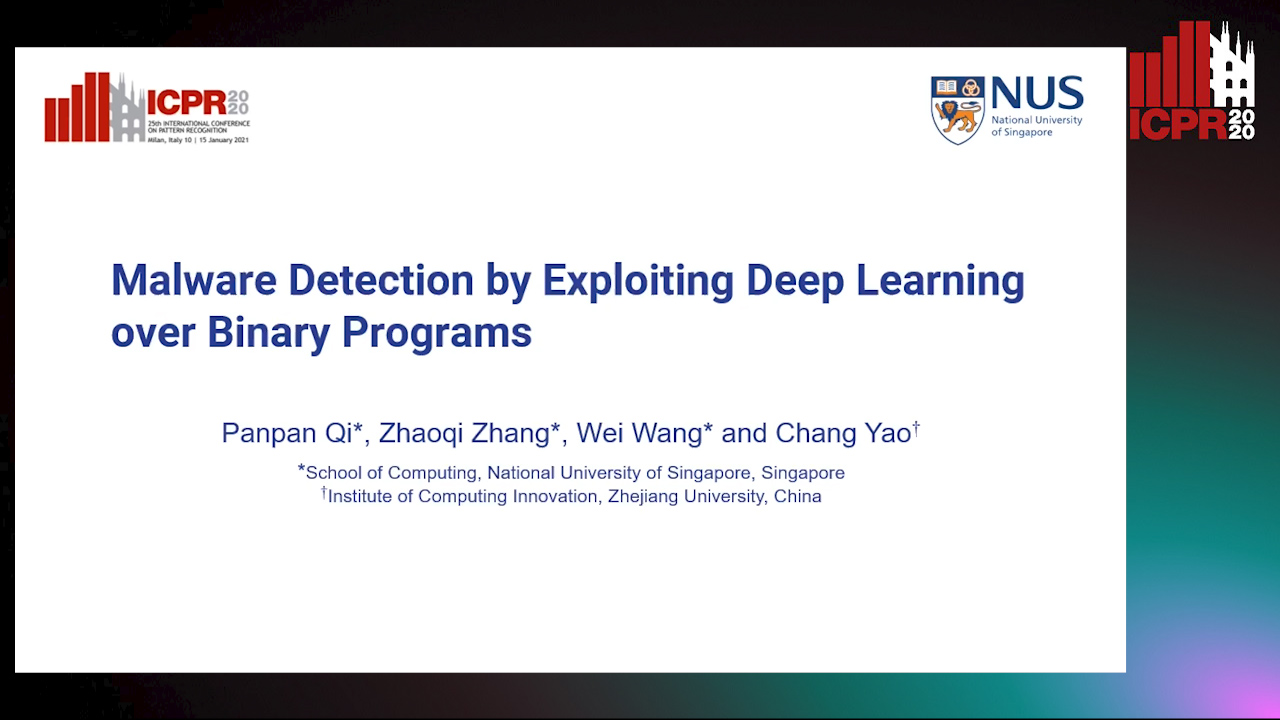
Auto-TLDR; End-to-End Malware Detection without Feature Engineering
Abstract Slides Poster Similar
Space-Time Domain Tensor Neural Networks: An Application on Human Pose Classification
Konstantinos Makantasis, Athanasios Voulodimos, Anastasios Doulamis, Nikolaos Doulamis, Nikolaos Bakalos

Auto-TLDR; Tensor-Based Neural Network for Spatiotemporal Pose Classifiaction using Three-Dimensional Skeleton Data
Abstract Slides Poster Similar
Automatic Estimation of Self-Reported Pain by Interpretable Representations of Motion Dynamics
Benjamin Szczapa, Mohammed Daoudi, Stefano Berretti, Pietro Pala, Zakia Hammal, Alberto Del Bimbo
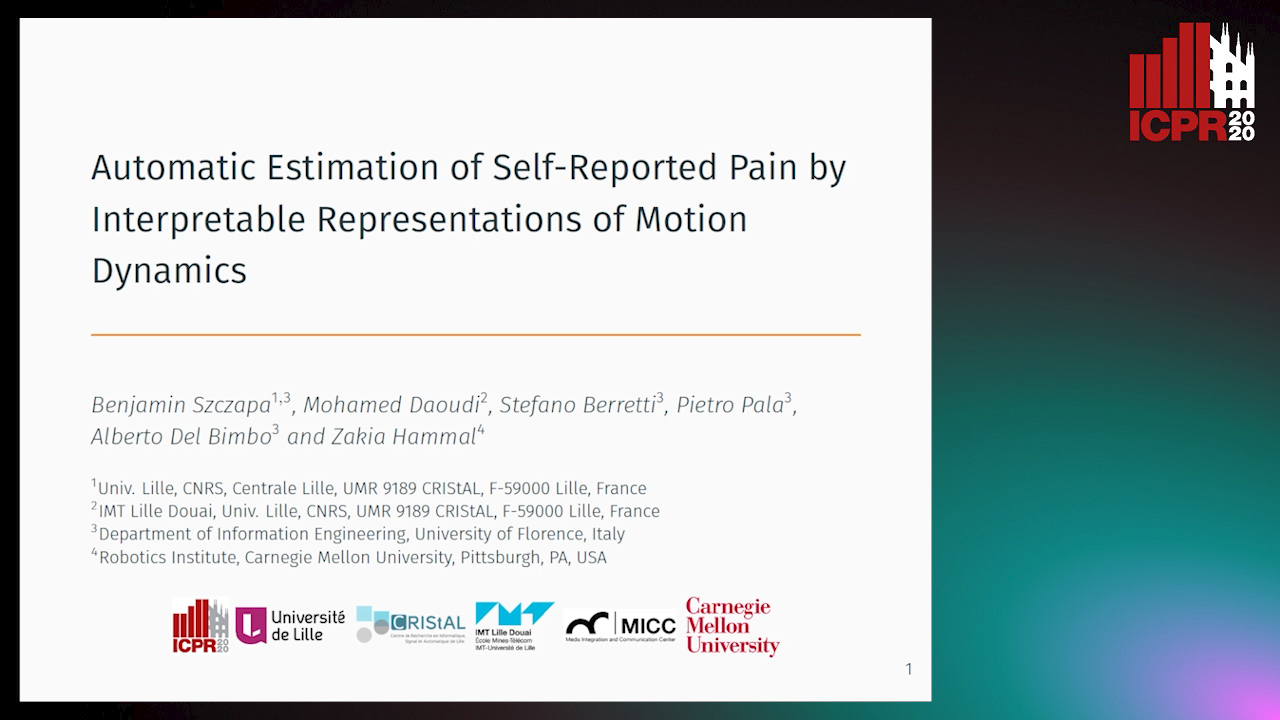
Auto-TLDR; Automatic Pain Intensity Measurement from Facial Points Using Gram Matrices
Abstract Slides Poster Similar
Classification and Feature Selection Using a Primal-Dual Method and Projections on Structured Constraints
Michel Barlaud, Antonin Chambolle, Jean_Baptiste Caillau

Auto-TLDR; A Constrained Primal-dual Method for Structured Feature Selection on High Dimensional Data
Abstract Slides Poster Similar
Personalized Models in Human Activity Recognition Using Deep Learning
Hamza Amrani, Daniela Micucci, Paolo Napoletano

Auto-TLDR; Incremental Learning for Personalized Human Activity Recognition
Abstract Slides Poster Similar
Supervised Classification Using Graph-Based Space Partitioning for Multiclass Problems
Nicola Yanev, Ventzeslav Valev, Adam Krzyzak, Karima Ben Suliman
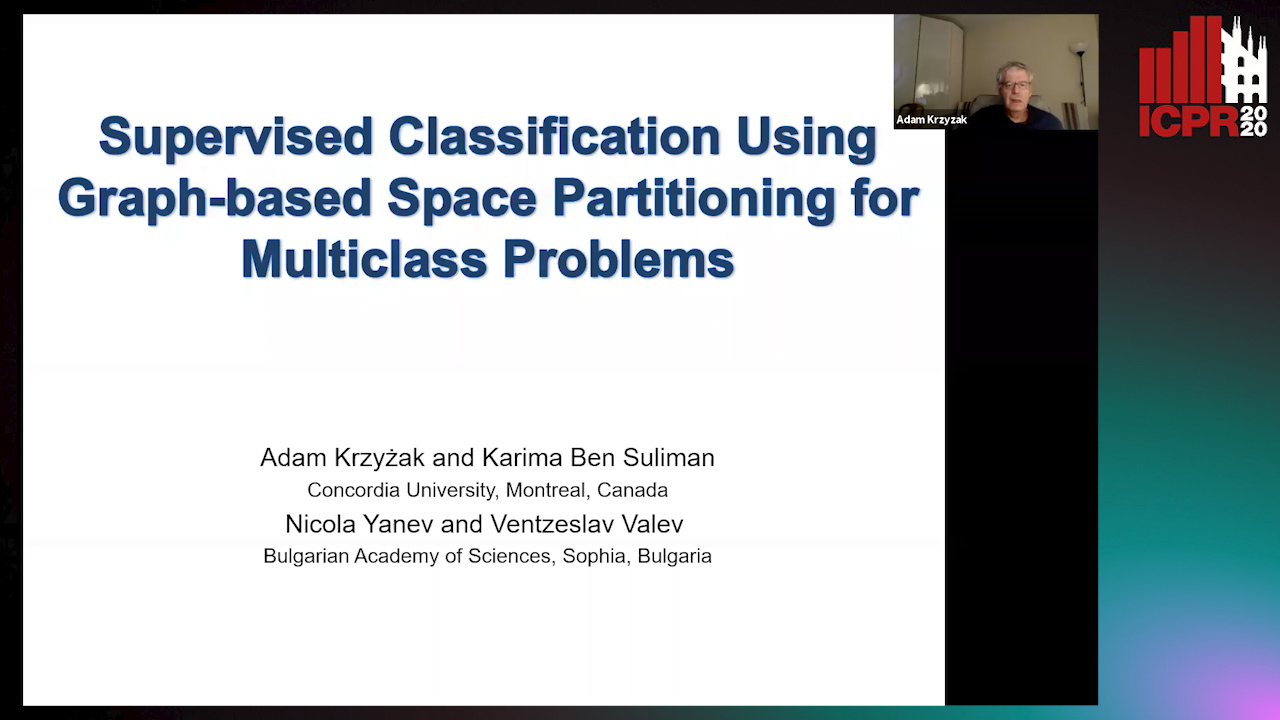
Auto-TLDR; Box Classifier for Multiclass Classification
Abstract Slides Poster Similar
A Novel Computer-Aided Diagnostic System for Early Assessment of Hepatocellular Carcinoma
Ahmed Alksas, Mohamed Shehata, Gehad Saleh, Ahmed Shaffie, Ahmed Soliman, Mohammed Ghazal, Hadil Abukhalifeh, Abdel Razek Ahmed, Ayman El-Baz

Auto-TLDR; Classification of Liver Tumor Lesions from CE-MRI Using Structured Structural Features and Functional Features
Abstract Slides Poster Similar
A Multilinear Sampling Algorithm to Estimate Shapley Values

Auto-TLDR; A sampling method for Shapley values for multilayer Perceptrons
Abstract Slides Poster Similar
Watermelon: A Novel Feature Selection Method Based on Bayes Error Rate Estimation and a New Interpretation of Feature Relevance and Redundancy

Auto-TLDR; Feature Selection Using Bayes Error Rate Estimation for Dynamic Feature Selection
Abstract Slides Poster Similar
Automatic Classification of Human Granulosa Cells in Assisted Reproductive Technology Using Vibrational Spectroscopy Imaging
Marina Paolanti, Emanuele Frontoni, Giorgia Gioacchini, Giorgini Elisabetta, Notarstefano Valentina, Zacà Carlotta, Carnevali Oliana, Andrea Borini, Marco Mameli

Auto-TLDR; Predicting Oocyte Quality in Assisted Reproductive Technology Using Machine Learning Techniques
Abstract Slides Poster Similar
Feature Extraction and Selection Via Robust Discriminant Analysis and Class Sparsity

Auto-TLDR; Hybrid Linear Discriminant Embedding for supervised multi-class classification
Abstract Slides Poster Similar
Automatic Annotation of Corpora for Emotion Recognition through Facial Expressions Analysis
Alex Mircoli, Claudia Diamantini, Domenico Potena, Emanuele Storti

Auto-TLDR; Automatic annotation of video subtitles on the basis of facial expressions using machine learning algorithms
Abstract Slides Poster Similar
GazeMAE: General Representations of Eye Movements Using a Micro-Macro Autoencoder
Louise Gillian C. Bautista, Prospero Naval

Auto-TLDR; Fast and Slow Eye Movement Representations for Sentiment-agnostic Eye Tracking
Abstract Slides Poster Similar
Position-Aware Safe Boundary Interpolation Oversampling

Auto-TLDR; PABIO: Position-Aware Safe Boundary Interpolation-Based Oversampling for Imbalanced Data
Abstract Slides Poster Similar
Supporting Skin Lesion Diagnosis with Content-Based Image Retrieval
Stefano Allegretti, Federico Bolelli, Federico Pollastri, Sabrina Longhitano, Giovanni Pellacani, Costantino Grana

Auto-TLDR; Skin Images Retrieval Using Convolutional Neural Networks for Skin Lesion Classification and Segmentation
Abstract Slides Poster Similar